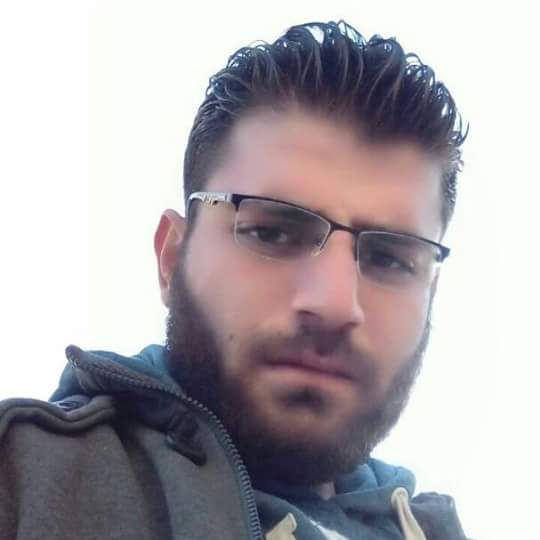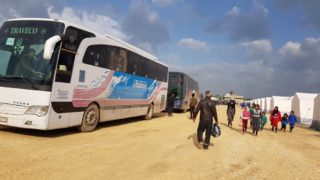A one-of-a-kind reverse displacement is taking place in Syria with hundreds of people leaving opposition-held territory in the north and returning to their villages in areas that had been retaken by the Syrian regime since the end of 2017. These areas include about 300 towns and villages that exceed 2,400 km2 in the eastern area of the Hejaz Railroad.
This trend is the outcome of dire humanitarian conditions, mainly the exorbitant prices, high unemployment rates, shortage in aid, and faction fighting in Idlib Province, which is the last major opposition bastion (alongside some areas in the Daraa Province in the south). These areas absorbed many internally displaced people where local councils and aid groups are struggling to meet people’s needs. Consequently, the regime took advantage of the situation, creating temporary passages to facilitate the crossing of civilians from opposition pockets into regime-held territory.
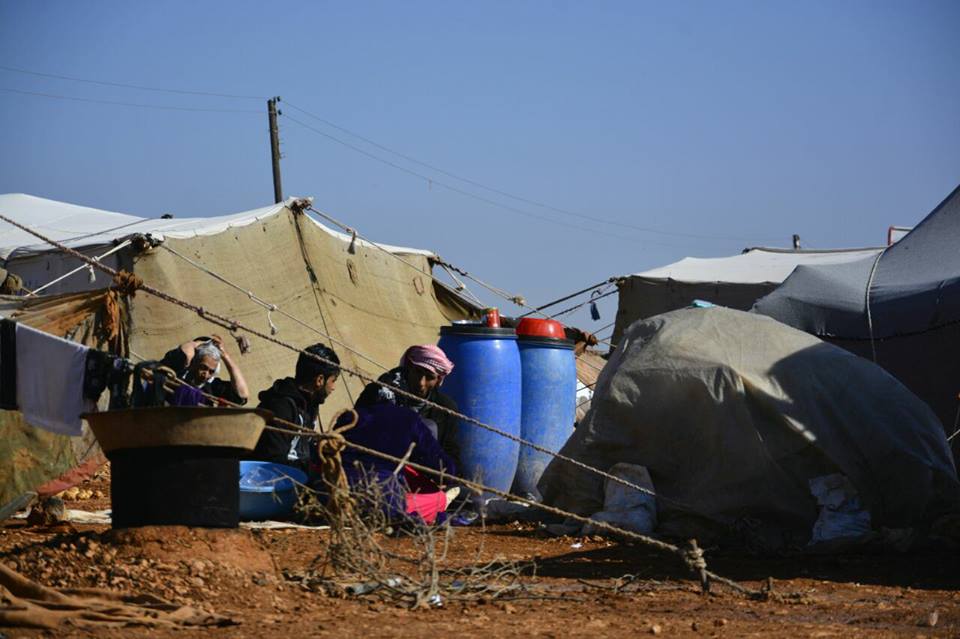
Tough Living Conditions Push People Back to the Regime
Yaman Al-Amir, 33, returned to his village in the southern Aleppo countryside after he originally left for Idlib Province on a trip that lasted more than two months. During a phone interview, Amir tells SyriaUntold that he was “unable to provide a suitable residence for his wife and young daughters in the southern Idlib town of Ariha due to high prices, unavailability of proper housing, and lack of humanitarian aid by the aid groups in the area.”
Amir notes that he chose to return to his village that recently fell to the regime forces. His motives to agree to the national reconciliation with the regime was to protect his family from the indiscretions he has heard about taking place in other areas. However, he said he doesn’t trust any promises given by the regime and is aware he might be arrested at any moment.
Samah Rajoub, 36, said that she returned to her village of Al-Sheikh Hilal in the Hama countryside at the end of March 2018 after she had left to the Idlib Province at the end of 2017. She told SyriaUntold that she used to be a teach at one of the village schools before shelling and fighting in the area intensified. Rajoub added that she tried looking for a job to support her children, knowing she’s the sole breadwinner after her husband was arrested in 2014. Her inability to find employment forced her to go back to her village so as to return to her job and to provide a decent life for her family.
Abu Mustafa, 54, who chose to remain anonymous, told SyriaUntold that he left the village of Al-Zafiriyeh in eastern Hama, fleeing the shelling that was targeting civilian areas. He left behind tens of kilometers of farmed land, which was almost ready to be harvested. “I put all the money I’ve ever made into these lands. I was never at odds with the regime nor was I wanted by the security [apparatuses]. I had to come back to the village to pick up where I left off.”
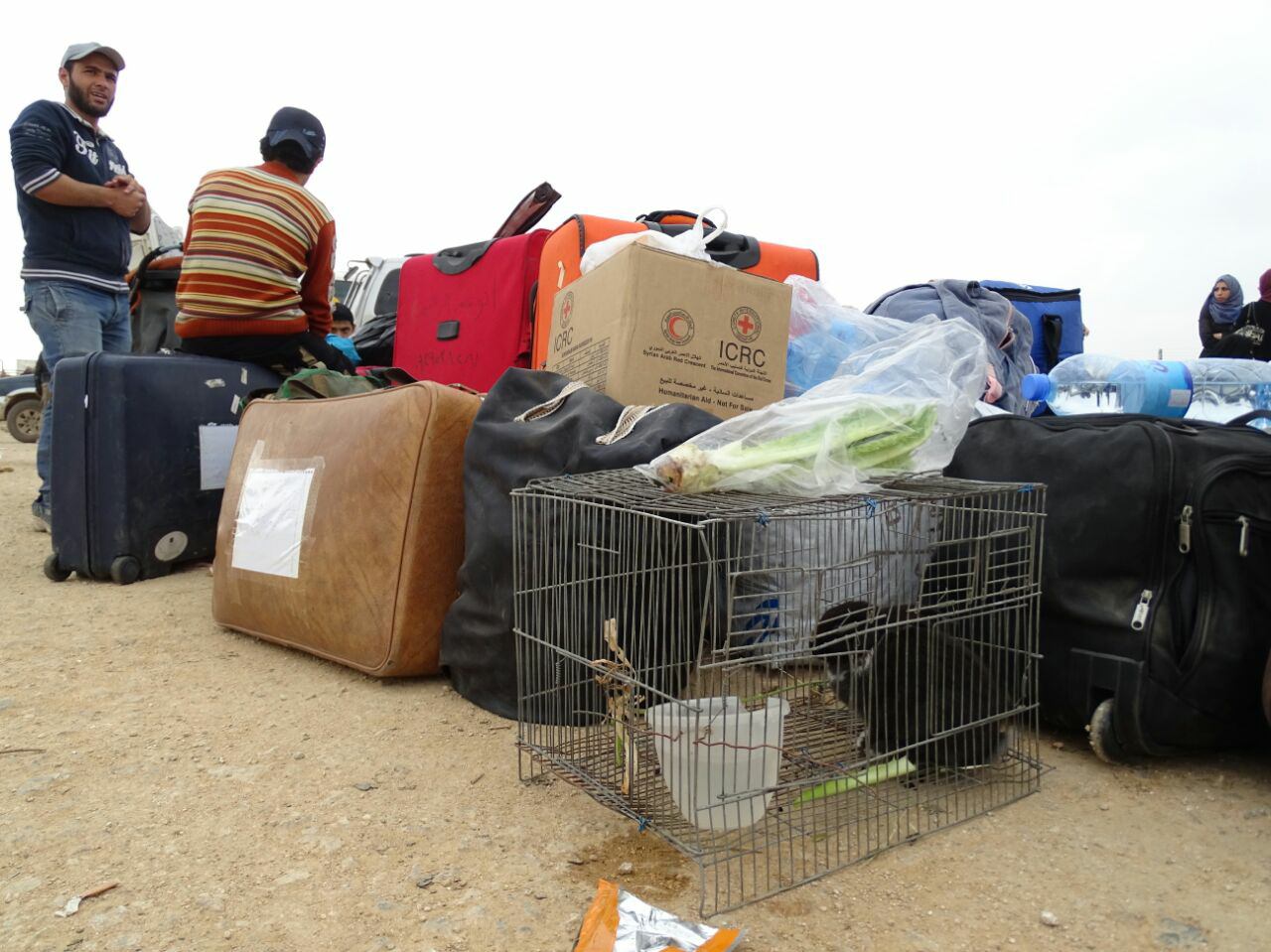
Youssef Matar, 48, left his home village of Rajm al-Mashref in the eastern Idlib countryside with his family. He currently lives in the area of Deir Hassan in the Idlib countryside in a makeshift camp made up of less than 20 tents.
Talking to SyriaUntold, he complained of the bad living conditions and the lack of humanitarian aid to those displaced.
“We didn’t really find anyone to care for us. We didn’t know where we were going or what to do. We stayed out in the open for a few days before we rented agricultural land where we built tents made out of sackcloth and old, tattered blankets.”
“We had no infrastructure: no electricity, no water, no toilets. This was the biggest problem facing the women and girls. They had to wait until after sunset to use the bathroom or had to cover themselves with a piece of cloth if they managed to find one.”
Matar added that “the winter cold did not spare any of the internally displaced. In the morning, we had a daily roundup to look for anything that is flammable, such as dry grass or dried animal dung to keep the fire going, which we used to keep warm and cook food.”
He noted that many local aid organizations had interviewed them and registered their needs, but they never returned. He said they had called on humanitarian and aid organizations to provide tents that would protect them from the cold as well as provide children’s need and foodstuffs.
Matar said that he intends to return to his village of Rajm al-Mashref, which is currently under regime control, in the coming days, but only after he makes certain that those who have already returned are safe.
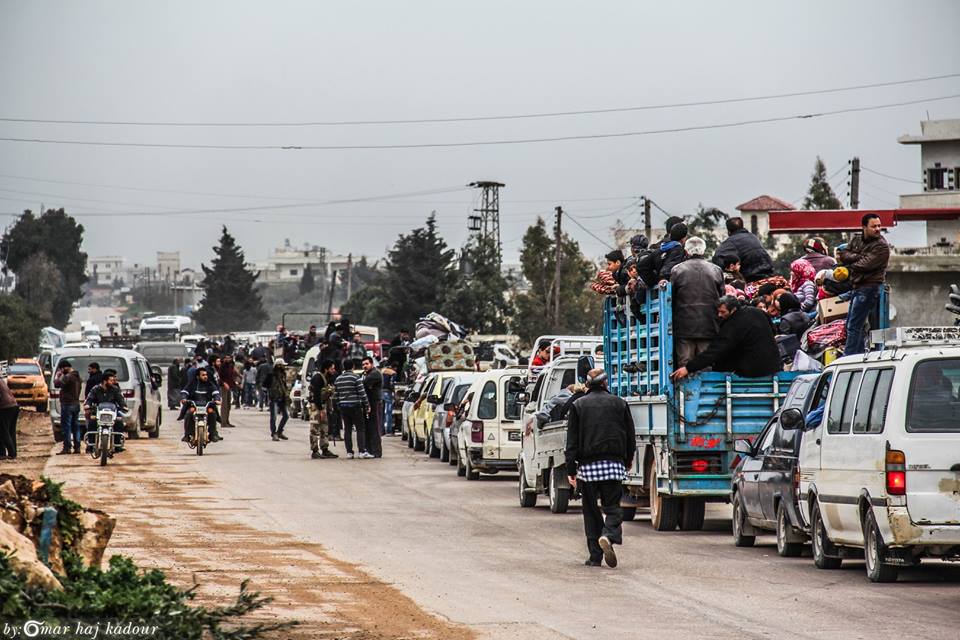
Local aid groups under immense pressure
Response coordinator for the displaced at Munasiqu al-Estijaba (a group of volunteers who coordinate between humanitarian organizations and the displaced to facilitate meeting the latter’s needs and to properly document the numbers of those displaced) Mohammad Jafa told SyriaUntold: Aid organizations were surprised by the sheer number of those displaced, which averaged 300 families a day (between December 2017 and January 2018).
Families were fleeing the military operations taking place in the southern and south eastern Idlib countryside, the northern Hama countryside, and the southern Aleppo countryside between December 2017 and January 2018 when the regime was conducting a military campaign on their villages.
The aid groups couldn’t create an immediate response program with the constant displacement from one place to another. Despite the fact that many organizations gave emergency aid packages, we still needed tens of thousands of tents, food packages, detergents... So the organizations were unable to cope with the catastrophic situation due to this wave of displacement.
Jafa, who currently resides in the city of Armanaz in the southern Idlib countryside, said that the large number of children and infants only exacerbated the situation, since they require immediate assistance for necessities well as heating and food, especially as their families were staying out in the open and in the cold.
Jafa, who volunteers and is politically neutral (he doesn’t belong to or endorse any military faction or organization), said that Munasiqu al-Estijaba in northern Syria had documented the displacement of 55,065 families, which included around 309,565 civilians.
They were spread out at 379 different points in the Idlib countryside and were made up of 56,845 men, 67,292 women, 90,820 boys and 90,608 girls. Jafa noted that they couldn’t document the number of all those displaced because of their repeated movement.
Opposition factions fighting each other
Those displaced stayed away from city centers in the countryside of Idlib and opted for places that provided similar environments to those in their home villages, especially in the villages of Jabal al-Zawyeh and others located close to the Syrian-Turkish border in the northern Idlib countryside.
Yet they couldn’t find the safety they were seeking because their displacement coincided with violent clashes using mid-weight and heavy artillery between the Syrian Liberation Front (which formed as a merger of Ahrar al-Sham and the Nour Eddine al-Zenki movement) and Haayat Tahrir al-Sham (HTS). The latter was attempting to control the cities and towns under the rule of the Syrian Liberation Front, especially the border passages with Turkey.
Umm Mohammad, 45, who requested to remain anonymous, told SyriaUntold with tears in her eyes that she and her 14-year-old son fled the shelling and fighting surrounding her village of al-Mughara in the eastern Idlib countryside. In the process, she lost her only son to a stray bullet from opposition factions inter fighting in the Musaibeen village next to the city of Ariha in the southern Idlib countryside.
Passages open under Russian-Turkish sponsorship
Residents of southern and eastern Idlib country sides as well as southern Aleppo countryside chose to return to their villages after they witnessed how things were in the Idlib province, especially after the military operations ended with the regime forces taking over.
They placed pressure on civilian entities as well as local councils demanding passages be opened between regime-controlled areas and those under opposition rule to allow those displaced to return home.
According to the head of the local council in Tal al-Daman in the southern Aleppo countryside, Khalid al-Hamidi, one passage was opened 31 kilometers east of the city of Idlib and close to a Turkish observation point at the village of Tell Touqan, which is between the city of Saraqeb and the town of Abu al-Duhur on March 4, 2018.
Hamidi added that the passage was opened under a Russian-Turkish sponsorship, where the Turkish observation forces will be facilitating on the Idlib side of the passage and the Russians on the Aleppo side. He noted that families wishing to return to their villages should register their names and provide a copy of their family book to be able to cross over.
This particular passage way will remain permanently open with daily office hours between 8 a.m. and 2 p.m. except on Fridays, when it is a weekly holiday.
Hamidi also said that regime forces had closed all passages between areas under its control and those under the control of opposition factions. The main passages were in al-Sain and Abu Dali in the eastern Hama countryside and Morek in the northern Hama countryside. The latter was opened to facilitate the passage of commercial fleets as well as of travelers after the regime launched its military campaign at the end of 2017.
Marwan al-Jabal, 29, is an activist in the aid sector. He told SyriaUntold that there have been no statistics on how many people returned to the areas under regime-control.
However, he noted that they were able to document the return of 300 families in the Idlib and Hama country sides as well as 200 families in the southern Aleppo countryside, adding that most of those were made up of women and elderly who chose to come back to guard their properties and homes and because they were afraid they wouldn’t be allowed to return.
Jabal, who’s a resident of the al-Zerbah village in the southern Aleppo countryside, said that most of those displaced have nothing to do with the Syria revolution. He added that they were heading to regime-controlled areas in Hama and Damascus because they wanted to sell their crops given that they were farmers and cattle herders. He also said that previously they were forced to flee to opposition-held areas because of the barbaric shelling and fighting that was taking place in their villages.
According to Jabal, those who returned to their villages did so in fear, leaving behind a tent or a rented house to ensure they have a place to stay with their families in case they were displaced again, especially in light of news that the regime forces made several arrests against civilians who recently returned to their villages.
It is worth noting that five commercial and humanitarian passages between the regime-controlled areas and those under the opposition’s control in northern Syrian were initially opened, but then two were closed again. The remaining three are permanently functional and they are: the commercial passage of Murak in the northern Hama countryside, the humanitarian Tell Touqan passage that allows civilians to return to the southern Idlib countryside, and the Shmawiyeh passage located west of Al-Bab city in the northern Aleppo countryside. The latter is the first commercial passage between regime areas and opposition pockets, which was opened on December 9, 2017.
The two passages of Abu Dali and Al-Madeeq castle were closed again at the beginning of 2018 following a military operation in the area. They have yet to be reopened.
Measures taken to limit the reversed displacement wave
Several opposition local councils and aid groups working within the armed opposition controlled areas (not related to international organizations such as the Red Crescent and the Red Cross and others) followed up on the conditions of the displaced after so many showed up at the recently-opened passages. The goal was to limit the return rate to areas under regime control.
Minister of Social Affairs and Displaced Persons in Syria’s Rescue Government Mohammad Ali Amer told SyriaUntold that: we have quickly built several camps to shelter the displaced living in the open and in random camps. We are still putting a lot of effort to work with aid organizations to help the forcibly displaced in different Syrian governorates and cities.
Ahrar al-Sham spokesman in the political wing, Omran Mohammad, told SyriaUntold that they “tried hard to keep the civilians out of the current fighting taking place in northern Syria as well as to provide a safe place for them to stay by fending off HTS fighters, whom, he said, were trying to gain control of the cities away from residential buildings.”
He noted that Syrian Liberation Front fighters had withdrawn from many areas to keep civilians safe, especially after HTS members situated themselves among civilians’ houses and tents.
Mohammad also said that “we can’t force the residents to stay in our areas and away from their villages, but we have worked to spread awareness among the displaced via our own media and to warn them against the regime’s false promises and to show how they always break their word.”


